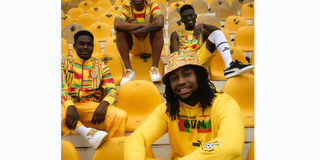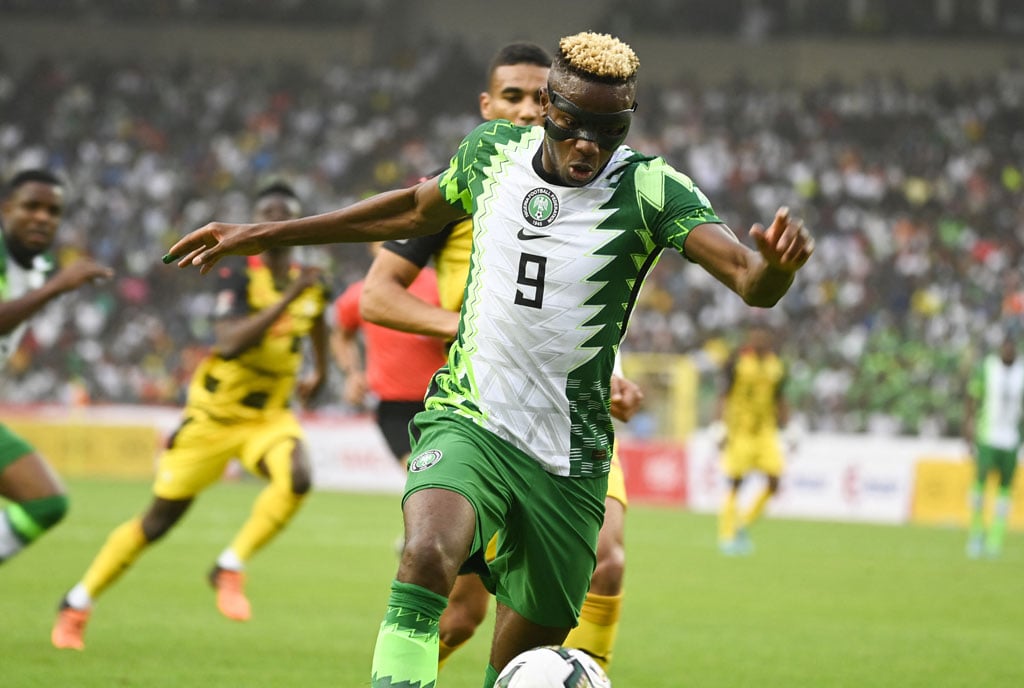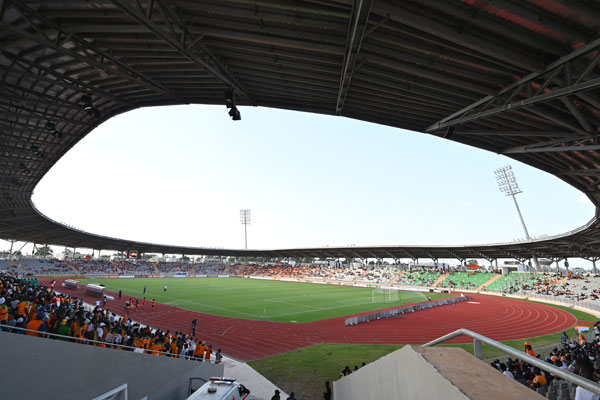Prime
They came, they wore and rocked Afcon 2024

Tunisia. The northern African country came to the tournament with the absolute beauty of a home kit. PHOTO S/COURTESY/PUMA X PAGE/ CAF X PAGE
What you need to know:
In the 2000s, kit manufacturers started experimenting with fashion. The first were Kappa, Fubu, and Fila, who had already ventured into athleisure manufacturing clothing that was cool, sleek, and fitting. As Afcon comes to a close on Sunday, Andrew Kaggwa and Isaac Ssejjombwe present some of the outstanding kits at this year’s tournament.
Apparently, there was a time when football was just a sport.
Then, 22 men would show up on a pitch and kick a piece of leather. Some would win, others would lose, and some individuals would go ahead and write their names into history.
People such as Lionel Messi, the known greatest player, and Cristiano Ronaldo, the other guy who is also a good baller, went on to become icons and cultural influencers.
Over the years, football teams have produced players whose influence has flown from Highbury, the then home of Arsenal, to Kalerwe, where most people do not even own a passport.
Those people in Kalerwe will work tirelessly to own Arsenal’s kit every season. They celebrate when Arsenal buys a new player as if it was their own money. That is when kits became a thing, their launch became an event, models were employed to walk the runway in kits. Before the World Cup or any tournament, Nike, Puma, Adidas and Umbro will release a number of kits that different countries will be donning for the campaign.
Back in the day, we used to laugh at the buggy long-sleeved shirts, knickerbockers, and high socks. Most of the time, these kits were larger than life on small bodied players. Imagine a teenage Michael Owen covered in the red English Three Lions kit; the thing made him appear even younger.
In the 2000s, kit manufacturers started experimenting with fashion. The first were Kappa, Fubu, and Fila, who had already ventured into athleisure manufacturing of clothings that was cool, sleek, and fitting.
But for the 2002 tournaments, Puma went out of the way with the Cameroon national team kits. The indomitable lions probably own one of the most iconic and yet controversial football kits; the sleeveless kit from their successful Africa Cup of Nations campaign in 2002.
The thing about Cameroon is that it is a West African country. Most of these countries have the same flag colours; green, red and yellow, so it is hard to stand out. Which made the sleeveless ideal.
Yes, they wore sleeveless kits like it was a basketball game. The team wore that kit in green and white for all the games, including the final against Senegal.
Much as Cameroon, Eto’o and friends may have celebrated winning the tournament, Fifa was not happy. In fact, the kit was banned and the team was asked to use a different kit for the World Cup later that year.
Fifa spokesperson Keith Cooper said at the time that the kit was rejected because “they are not shirts, they are vests.” But as we said, Cameroon owned the kit game in 2002; they did not see the point in scrapping the kits. Cameroon found a compromise that allowed the kit to make it onto the pitches of Korea and Japan. Simple black T-shirt sleeves were stitched onto the vests, complete with the 2002 World Cup logo printed on the end in white. Like, for real.
But the sleeveless was so famous that later that year at the French Open, Serena Williams wore an interpolated female version kit during a match.
Cameroon, in probably the biggest dare moment of 2004, came back, this time to upset Fifa with a one piece kit. That kit borrowed from the aerodynamic functionality of sprinters’ clothing.
Today, kit manufacturers dive deep into design; nothing is outrageous, but they still present some amazing concepts and patterns. As Afcon comes to a close on Sunday, we present some of the outstanding kits at this year’s tournament.
Tanzania
The only East African country in the tournament, Tanzania’s jersey manufacturer Sandaland, just did a copy and paste of the Brazilian away kit with their home kit. The two jerseys are so familiar, with a dominant hue of blue accented by hints of yellow that mesh well together.
The kit’s body features a subtle yet eye-catching diamond pattern, which does well to elevate the simple design of the shirt. Tanzania has a sleeper home shirt that is sneakily one of the best at the tournament.
Yet, the resemblance to the great Samba away kit has not resonated with Tanzania’s game. Tanzania looks like Brazil playing away but plays like Busiro during a Masaza tourney.

South Africa
For South Africa, the dark green shirt is an attractive look with a hidden pattern and soft gold accent details. This set of kits by the South African team was designed by competition winner Freeway Arts, and though the kits that were eventually made were slightly toned down from the original competition entry, they remain some of the better ones at Afcon.
However, compared to masterpieces such as South Africa’s 1996 and 1998 kits, it is funny how this kit has become as plain as years go by. The truth is, their kit used to be beautiful and outstanding; today, it is just okay.
Much as it is one of the outstanding kits of the tournament, South Africa’s Bafana Bafana kits are one of the ugliest they have put on in years. With their best kit in 1996, South Africa managed to become champions.

Cape Verde
There are many things we could say about the dark blue kit from Tempo Sport. It is simple. The home jersey has a blue base with a red rounded neckline and matching sleeve cuffs. Strips in dark blue run along the shoulders, while broken pinstripes accent the front of the shirt. A print of the islands making up the Republic of Cabo Verde is included, along with the faint text ‘CABO VERDE’ which adds more detail to the kit.
Now, the simplicity and elegance of the kit make it easy Saturday afternoon attire, and the dark blue shade makes it unisex, and the female supporters from the country have looked really good in it.

Tunisia. The northern African country came to the tournament with the absolute beauty of a home kit. PHOTO S/COURTESY/PUMA X PAGE/ CAF X PAGE
Tunisia
The northern African country came to the tournament with the absolute beauty of a home kit. Draped in a brilliant hue of red, the pattern featured on the kit is a nod to Tunisian and ancient Roman architecture, more specifically the El Jem Amphitheatre. It also has a polo collar; to put this in context, polo collars have been out of vogue for years; these days, we only wear them to play golf. Anyway, it is the only polo collar shirt in the tournament.
The details of this shirt really make it stand out, all the way down to the holographic Kappa logo (the designer) and national crest on opposing shoulders.
In fact, the most interesting things about the kit are the details; besides that, it is just red, the same way Brazil is just yellow or the Netherlands is just orange.
Angola
Designed by Portuguese brand Lacatoni, Angola’s kit had a subliminal pattern throughout the red portion of the shirt, and this is a standout feature. It also has a black band that does not extend around the back. Black being a neutral colour, Lacatoni blended it well with red and yellow, making it one of the best shirts at the tournament.
On the other hand, the Angola kit could be a good Ugandan kit; they have all the colours, and they seem to have a better play of them than ours, which at times looks like a shredded flag hanging upside down.
Namibia
South African brand Vecchio came up with the Namibian kit. It chose purple, pink, and green with a pleasing column structure combining gradients and waves. This affair shows the traditional African garment at its finest. Dull but at the same time not dull colours.
Mali
No country has a more eye-catching set of kits than Mali, as all three home, away, and third designs were on point. A graphic of an eagle in all three colours of the Mali flag sits in the centre of each design. Claw marks and a winged pattern accompany the centrepiece to create a maximalist aesthetic. Simplicity was not on the priority list here by manufacturer Airness. The design, however, has some resemblance to the South African jersey, but the Mali kits have designs from carving out a memorable corner in the kit world. The giant eagle front and centre of their shirts has been a theme the team keeps coming back to.
For a person who has followed the kisaati trend on X, formerly Twitter, the Mali kit is the perfect football kisaati of the tournament.
Nigeria away kit
Renowned brand house Nike and Nigeria always bring the heat when it comes to kits, and although the nation did not receive a new design for Afcon 2024, the Super Eagle’s away kit needs to be appreciated. Predominately white with a unique pattern on the sleeves, it’s a solid design that successfully continues Nigeria’s jersey legacy.
The home kit easily fits the kisaati narrative, which is heavy with different shades of green graphics and artwork that is primarily native to the country.
Do you think you can rock this at the beach?
Yes.

Ivory Coast home
The hosts of the tournament came simple, because they always come simple. They had one of the more subdued kits in the tournament anthem with their iconic orange colour, but the lines and stripes on the body of the jersey are a nice, unique touch that elevates the simple design. Made by longtime kit supplier Puma.




